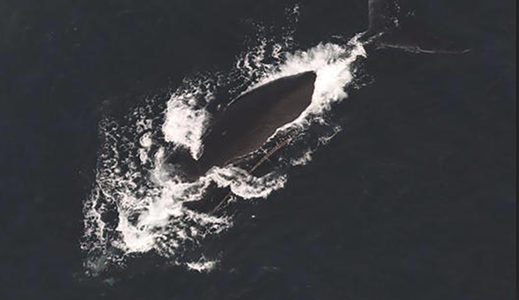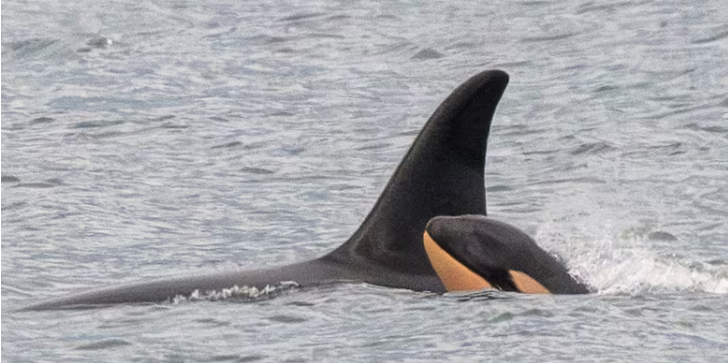— from Jeff Bossler —
With the exception of a few weak fronts moving through, most of the past four weeks have been marked by very bad air over the San Juan Islands … specifically over the islands.
Major and harmful pollutants which are known to harm our respiratory and coronary health have been way above normal, according to my daily visits to two websites; Windy.com and earth.nullschool.net. Both rely on combined satellite real-time information on weather, sea, and other conditions.
It may not be by chance that so many people are coughing and more asthmatic than normal with “what ever is going around.” Fine particulate matter (PM2.5) from diesel exhaust and burning of uncured firewood has been consistently pegged to “moderate” levels, meaning that people with respiratory or coronary issues should avoid exertion, and healthy people should also be concerned.

What’s even more, is that Nitrogen Dioxide (NO2) from the burning of fossil fuels at high temperatures has been in the “red zone” for many weeks now. This is the “haze” we’ve been seeing, that looks kind of blueish in the shade and orangish toward the sun. According to the American Lung Association, Nitrogen Dioxide is a serious pollutant that causes respiratory and coronary problems in all people, and is a major cause of asthma in young and old people.
One reason why the air has been so bad is that we’ve not had dynamic back to back fronts from the Pacific moving across our region. In normal times the east/west axis of the Fraser River Valley and the Strait of Juan de Jucca along with the north/south axis of the Georgia Strait and the Puget Sound has been good at cleaning us out, but not lately. This is in part, what caused our air to be higher in NO2 a few days ago than it was for the same exact time in Beijing China and Delhi India!
We all seem to think that when we get on the ferry in Anacortes and make that hour long passage floating along as we leave the mainland behind, that we are somehow immune to the rest of the world. We’re not.
If we consider … Shaw Island as the center of geographic gravity for the San Juan Islands and pretend we are flying crows, the Cherry Point oil refineries are on 21 miles away, the Anacortes oil refineries are 18 miles away, the Whidbey Island Naval Base is 19 miles away, downtown Vancouver BC is 45 miles to our north, and Everett is 53 miles to our south, Victoria BC along with Sydney BC is 22 miles to our west, and Bellingham is 25 miles to our east. My point? We, or no one else on this planet is fully in their own bubble.
I’ve watched waves of carbon pollution from Asia or smoke from Siberian forest fires cross the Pacific to pass over us, and I’ve watched smoke from intense forest fires in our northwest travel to Greenland and finally settle their fine particulates over Moscow.
In spite of it all, I find optimism in the fact that with these vivid and factually monitored events, we have begun to understand and see for ourselves, the relationships between our manmade and natural systems, including the one we rely on exclusively for our health and wellbeing … our tiny space rock called Earth and the climate we are given by chance among billions of other uninhabitable planets.
**If you are reading theOrcasonian for free, thank your fellow islanders. If you would like to support theOrcasonian CLICK HERE to set your modestly-priced, voluntary subscription. Otherwise, no worries; we’re happy to share with you.**







Nice explanation. Thanks.
Jeff, thank you for your thoughtful explanation of what the heck’s going on around our Islands. Scientists and informed people world wide know what problems humanity faces. It’s distressing that “we” are doing absolutely nothing to stem the inevitable down sliding of our environment.
OPALCO is encouraging us to change to electric heat pumps, electric cars, and generally higher efficiency homes and businesses. There are lots of incentives on offer at the OPALCO website. We have the highest per capita electric cars of any county in the U.S. Our solar installers are very busy. Change is happening.
The most common objection to individual action is that the effect of an individual’s actions are immeasurably small- which is why we continue to pollute adding our mite to the mass. But it also works the other way, and the example of individual action is a powerful teacher and potential multiplier of effect. It can start with us by avoiding fossil fuel use for heating, cooking and driving, thereby eliminating our own pollution that we needlessly suffer at close quarters and others suffer more distantly. Many can’t afford to make this shift, but if those who can do, the effect will grow. Everything has to start somewhere. Why not here?
Exactly right, Bill.
Think globally, act locally.
The older, shorter range electric cars are perfect for our islands, and they are for sale at a huge discount from the cost of newer, longer range electric cars.
I agree with the ‘act locally; think globally’ mantra. My wife and I compost, we recycle and do whatever we can within our means. However, I have for a long while thought that the true solution will only come when the leading nations of the world mandate that we turn away from carbon fuels and try something else!! Tragically, I don’t see that happening when this current administration has opted out of all the small good that has been accomplished. End or rant.
Outdoor burning and wood stoves are the cause of much of the pollution… we have to start thinking differently.
Jeff Bossler means well, and I respect and appreciate his interest in air quality in these islands. I also appreciate and support the discussion his letter prompted. However, his assertions about adverse air quality in recent weeks are potentially misleading given they are based on the CAMS data contained in Windy.com.
Unfortunately, the nitrogen dioxide data given by CAMS are for a column height in units of molecules per square centimeter, which is not a concentration unit that we can relate directly to health effects.
An even more serious limitation of the CAMS satellite data is that they have a spatial resolution of 80 km, or about 50 miles. As a practical matter that means the air quality of our islands is lumped in as a spatial average with the air quality of all the cities cited by Jeff. In fact, CAMS tells us nothing about the specific, quantitative air quality in the San Juan Islands, as emissions of nitrogen dioxide from vehicles and other sources will be many factors higher in cities like Vancouver or Bellingham compared with our islands, but the total molecules per area measured by the CAMS satellite resulting from those emissions will be assigned to the entire 50 mile by 50 mile grid element in CAMS that contains our islands.
Using CAMS to discuss ozone air quality on Orcas is even more problematic, not only because of the spatial resolution problem cited above, but also because CAMS measures only the total column height of ozone in the atmosphere and tells us nothing quantitative about the surface ozone we breathe.
Similar concerns about the CAMS data apply to fine particulate levels or PM2.5. But in this case we do have reliable measurements at an appropriate spatial scale in the San Juans, as last year Michael Riordan and I persuaded the county to install a PM2.5 monitor in Friday Harbor out of our concern for the highly elevated particulate levels experienced in previous summers from wildfires in the region. Data from that monitor would allow us to draw conclusions about fine particle concentrations in our islands during the unusually dry days of early November.
In summary, the CAMS data have broad utility in revealing regional air quality levels around the world but are not capable of revealing surface concentrations with any spatial resolution finer than the grid size of 80 km and in the cases of ozone and nitrogen dioxide provide column height measurements rather than concentrations. Given the wide disparity between emission sources in the cities surrounding us vs. the emissions from our much smaller populations in the islands (in contrast to say the L.A. region which has reasonably uniform source strengths across many CAMS grid elements) it is inappropriate to draw quantitative inferences about our surface level pollutant concentrations here on Orcas Island from the CAMS data.
There is in fact no substitute for direct pollutant measurements on our islands if we wish to know the air quality we are breathing here over time. This is an argument for our county re-joining the Whatcom County Air Pollution Agency and installing at least one air monitoring station measuring PM2.5, ozone and nitrogen dioxide in these islands.
Do we in fact still have PM2.5 measurements? It was my impression that the air-monitoring equipment was to be installed only for a short while and removed before this summer. Were they left in place, as Arthur and I recommended? This question is directed toward our County Councilors, particularly (pun intended!) Rick Hughes.
Jeff, this information is valuable and should be taken seriously by Islanders. Pollution related deaths are increasing worldwide. Associated pollution related illnesses are also on the rise. When my eyes begin burning, my nasal passages become irritated, I cough, and feel sluggish I suffer an infringement; my inherent right to breathe clean air. Clean air is a human right, not something to be bartered away by politicians dependent on corporate funding for re-election bids. May the County Council stand with the young, the elderly, and all who breathe for a living.
Thom Carnevale
Orcas Island
The issue isn’t just “There is air pollution in the San Juans,” it’s that there is continuing pollution elsewhere to which we are contributing. Even if we may be escaping it, that’s not a reason to continue contributing to it; we know perfectly well what we are doing. Those who can need to take measures and in doing so, will find that their investment will be repaid in savings. Talk to OPALCO bout “Switch it Up,” and consider an EV. Janet A. is absolutely right about the EV secondary market.
Arthur, I am with you and Michael. We need reliable local data to make good stewardship decisions. I think this is true for fresh water resources and fish habitat as well as for air quality. Gather data, analyze and act.
Actually, Arthur, it’s the Northwest Clean Air Agency we need to rejoin, of which Whatcom, Skagit and Island Counties are already members—and have been for decades. Last time I looked it would cost a puny $5600 a year to rejoin, given our small population. I cannot understand why our esteemed Council members continue to reject this eminently reasonable measure to help protect our citizens, especially the aged and infirm. But then, I cannot understand a lot of their decisions (or lack of decisions) lately.